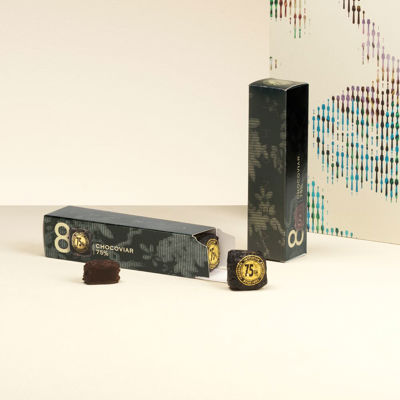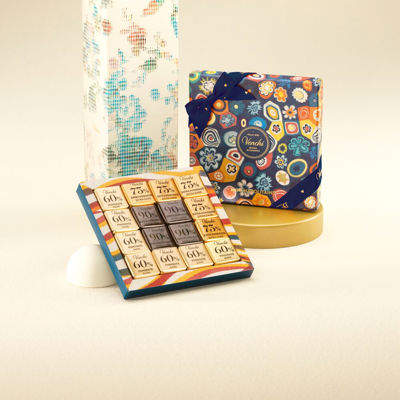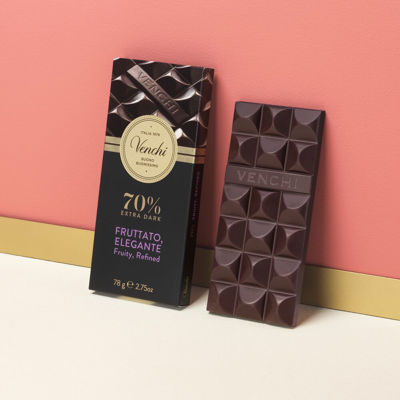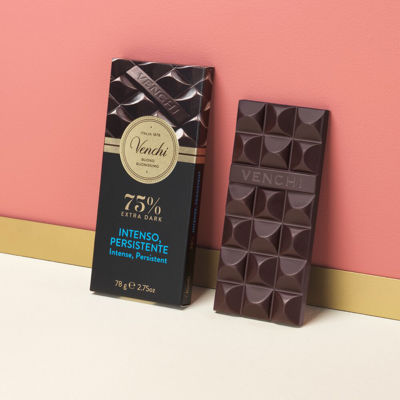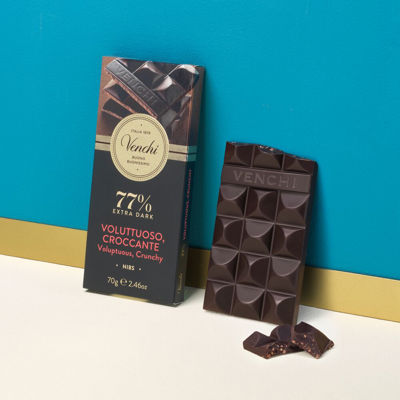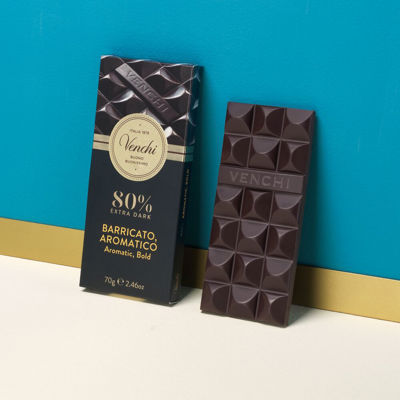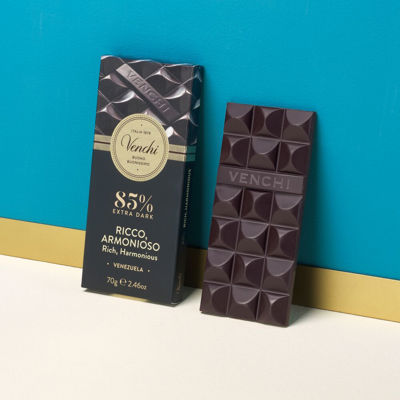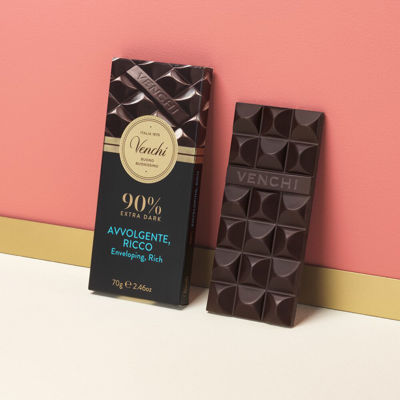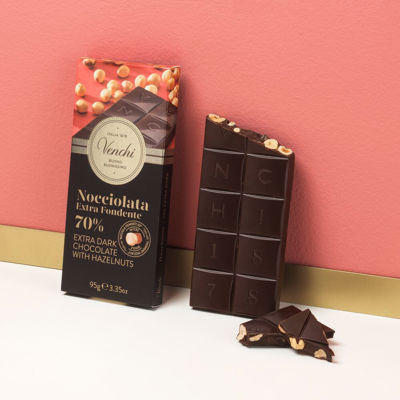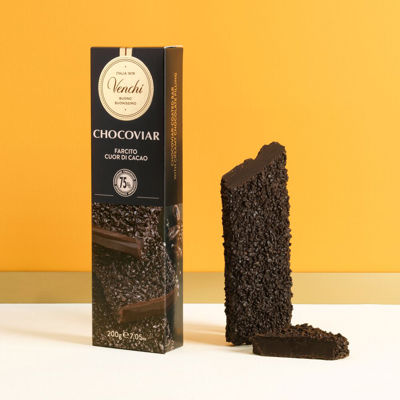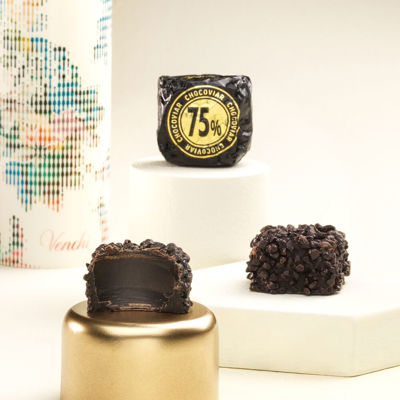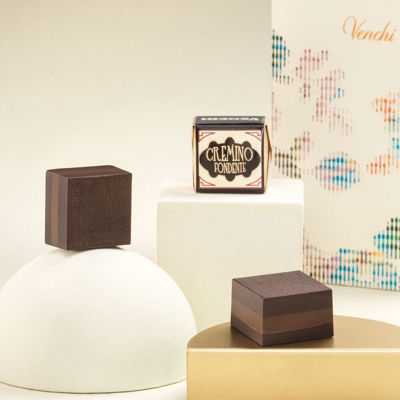
Is bittersweet chocolate the same as semisweet?
Bittersweet versus semisweet chocolate: what's the real difference? While they might seem similar, these chocolates vary in some pretty important ways. Let's dive into what sets them apart so you can choose the best one for your recipes.
VENCHI EXTRA DARK CHOCOLATE CREATIONS
Bittersweet vs semisweet: how do they differ?
Many of us are well aware of the differences between white, milk, and dark chocolate, but bittersweet and semisweet chocolates might be more of a mystery.
These fall outside the three main categories, and we’ll take you through the reasons why they’re not the same by looking at their ingredients, flavors, textures, and colors, so the next time you’re looking for chocolate, you’ll know the perfect one for you.
What is bittersweet chocolate?
For those who love deep cocoa flavors, bittersweet chocolate is the most suitable, containing 70% cocoa and packed with intensity. It’s darker than milk and semisweet chocolate but slightly sweeter than true dark chocolate, which is generally crafted from at least 75% cocoa.
What is semisweet chocolate?
Semisweet chocolate is closely related to bittersweet, but it contains only 60% cocoa, which means that it also features a touch more sugar and cocoa butter than bittersweet chocolate. These subtle distinctions mean that it tastes slightly sweeter and less bitter, with a smooth texture that melts in the mouth.
Main areas of differentiation
The differences between bittersweet and semisweet chocolate are very subtle. Perhaps with a blind taste test, it may even be difficult to recognise them, but we’ll help give you all the details you need and share their key differences below.
Ingredients
The same ingredients are used to create bittersweet and semisweet chocolate: cocoa solids, cocoa butter, sugar, and typically an emulsifier to create a smooth consistency. Produced from the cocoa bean, the cocoa solids (cacao) are usually where chocolate’s distinct, irresistible flavor comes from, while the cocoa butter is the fat extracted from the bean that adds richness and creaminess to the chocolate.
Bittersweet chocolate often has about a 70% cacao percentage, while semisweet’s is lower, usually around 60% cacao. Since there is less cacao in semisweet chocolate, it means there’s a greater proportion of cocoa butter and sugar compared to bittersweet chocolate.
Flavor
The secret to their different chocolate flavor is in their names; semisweet chocolate is slightly sweeter compared to bittersweet. Why? That’s because of the higher amount of cocoa that can be found in bittersweet chocolate, which gives it a more intense and moodier flavor, ideal for real cocoa lovers. Semisweet chocolate is made from a little less cocoa and more sugar, so its flavor tends to be milder and perfect for those with a sweet tooth.
Texture
Bittersweet and semisweet chocolate have very similar textures, but you may be able to taste some subtle differences if you really concentrate.
The higher percentage of cocoa in bittersweet chocolate means there is slightly less cocoa butter present, and it can feel a little more crumbly and dry in the mouth.
The opposite is true for semisweet chocolate, which means there’s more cocoa butter in the chocolate, helping to give it a creamy texture.
Color
Both chocolates are a glossy dark brown color, but there could be slight variations in the intensity of the brown due to the cocoa content. Bittersweet chocolate tends to look a little darker than the semisweet, thanks to how rich in cocoa solids it is.
Substituting semi-sweet for bittersweet chocolate in baking
Baking can be quite a precise science; if you accidentally switch out a tablespoon of salt for sugar, it can be a culinary catastrophe. So, when your recipe calls for semi-sweet chocolate and all you have in your pantry is bittersweet, do you have to give up altogether, or can you substitute one for the other?
Luckily, as we’ve already shown, because there’s only a 10% variation between the cocoa content of these chocolates and small differences in the sugar levels, you can substitute semisweet for bittersweet chocolate in baking recipes without too much stress.
But take your baked goods to the next level with our simple tips that will help you know each time whether bittersweet or semisweet chocolate would be the tastier choice. Bittersweet chocolate tends to be richer in cocoa and sophisticated, so it pairs beautifully with recipes that are more intense in flavor, such as chocolate mousses, ganaches, brownies, and chocolate tortes.
For sweet treats that aren’t so heavy on the chocolate flavor, semisweet chocolate is a delightful option, and it will add hints of chocolate taste to the dessert without overpowering it. Pair these kinds of recipes with semisweet chocolate and you won’t regret it: muffins, pancakes, puddings, and sponge cakes.

